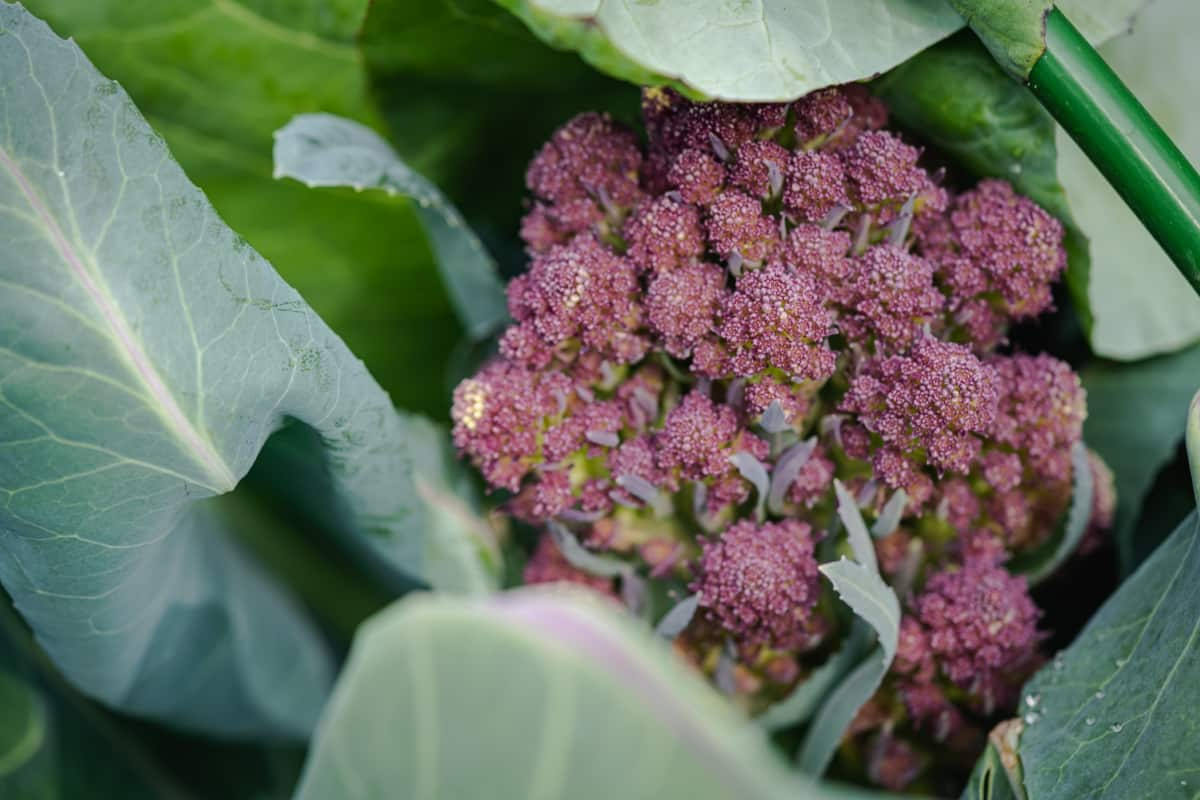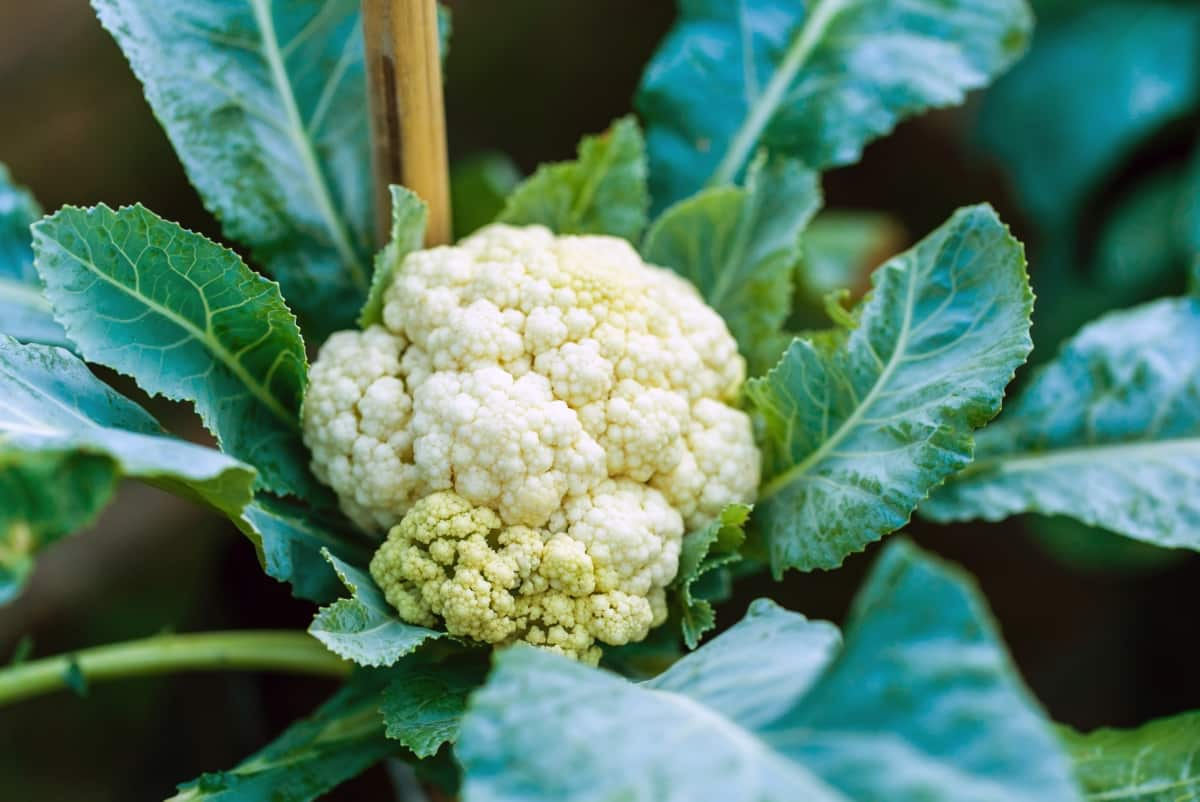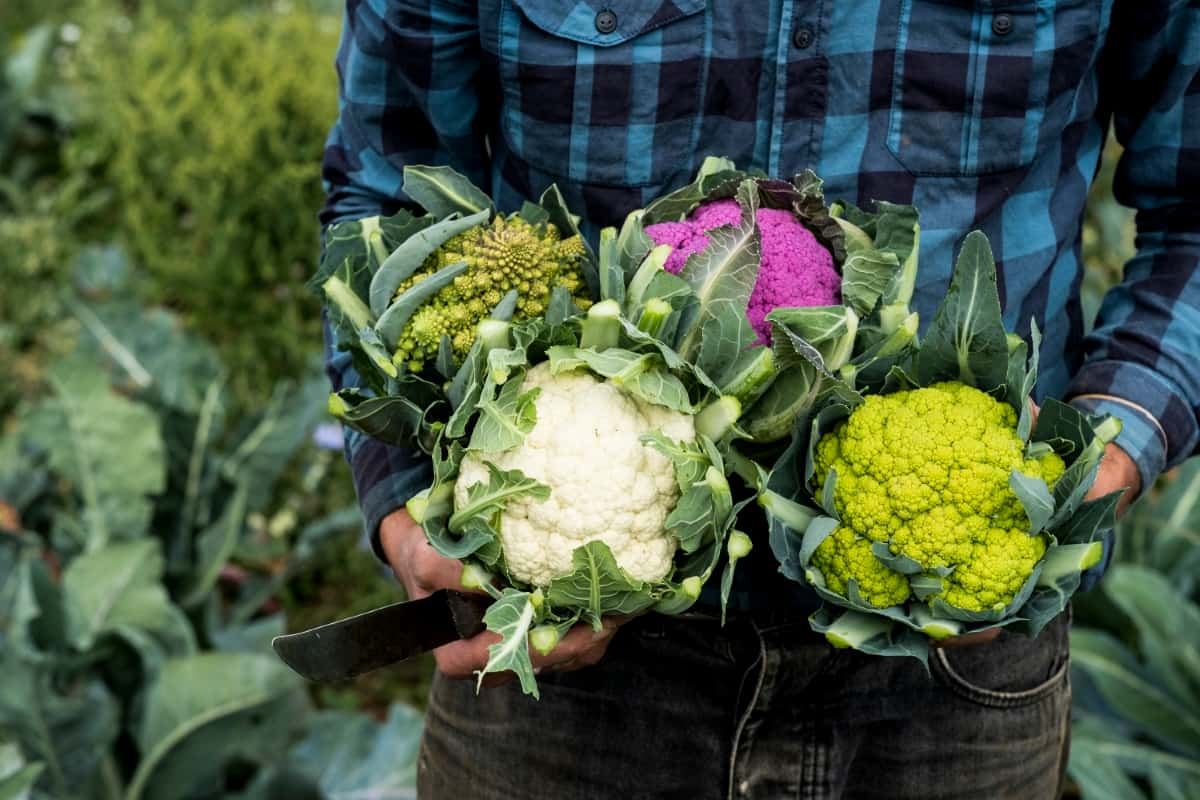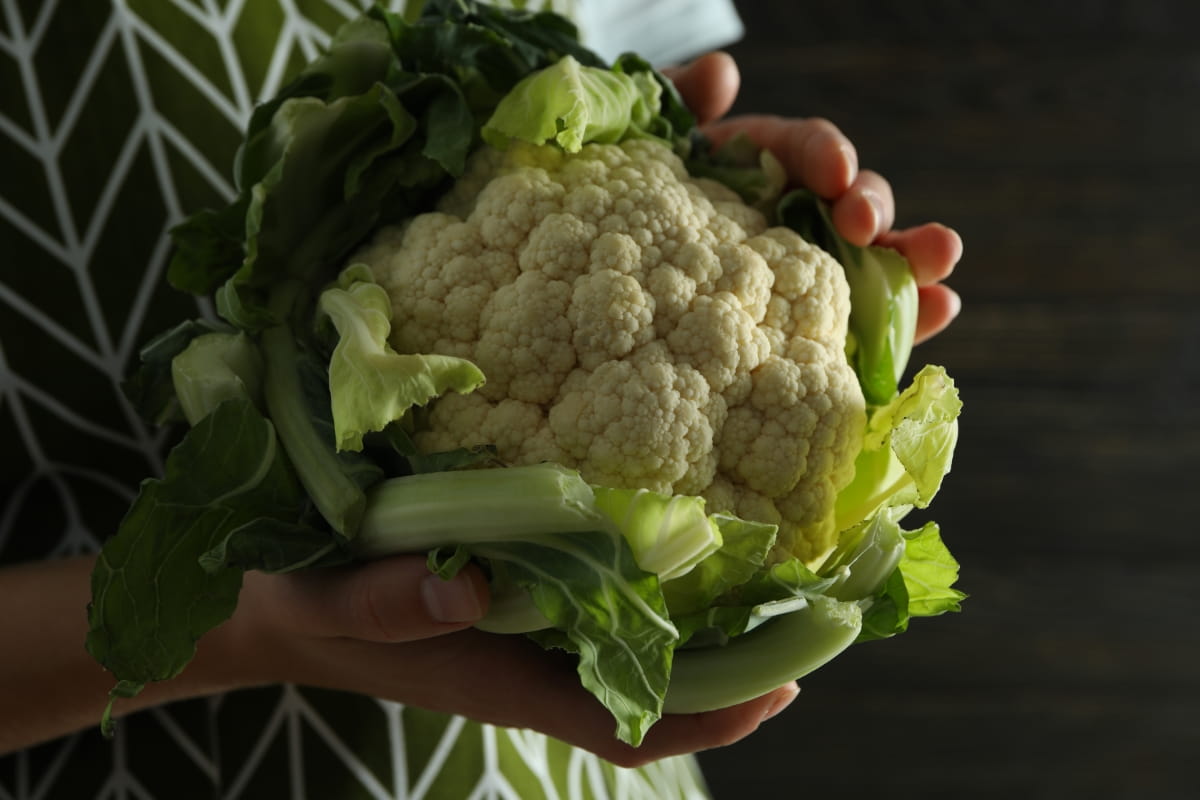Growing Cauliflower in vertical aeroponic towers offers a host of benefits, making it the best choice for home gardeners and commercial growers alike. The unique combination of vertical gardening and aeroponics allows for efficient use of space, water, and nutrients while maximizing plant growth and minimizing disease risks.

By following the beginner vertical farming Cauliflower guide on how to set up a vertical aeroponic tower specifically designed for Cauliflower cultivation, you can create the best environment for your plants to thrive. Remember to regularly monitor the pH levels, nutrient solution, and overall health of your Cauliflower plants to ensure optimal growth.
Grow Cauliflower in Aeroponic Towers
Step-By-Step Guide to Growing Cauliflower in Vertical Aeroponic Towers
Growing Cauliflower in vertical aeroponic towers is a unique and innovative way to cultivate this nutritious vegetable. With the right techniques and tools, you can enjoy a bountiful harvest of fresh Cauliflower year-round. To start, choose healthy Cauliflower seedlings or seeds from a reputable source. Ensure they are disease-free and have strong root systems. Prepare your vertical tower system by setting up the necessary infrastructure, such as sturdy frames, nutrient reservoirs, and vertical growing trays.
Next, create an optimal environment for your Cauliflower plants. Provide them with ample light using LED grow lights positioned at appropriate heights. When it comes to nutrient management, aeroponics allows for precise control over the nutrients delivered to each plant’s roots. Use a balanced hydroponic nutrient solution specifically formulated for leafy greens like Cauliflower. Implement preventive measures like introducing beneficial insects or using organic pest control methods when necessary.
Water usage is an essential consideration in vertical aeroponic farming systems. Make sure your system has efficient water circulation mechanisms to minimize wastage while providing adequate hydration to the plant’s root systems. As your Cauliflowers near maturity, closely monitor their progress by observing changes in the color and size of their heads (curds). Harvest Cauliflower heads when they reach full size but before they begin to loosen or separate into florets.
Maximizing Yield: Advanced Techniques for Cauliflower Cultivation in Aeroponic Systems
When it comes to growing Cauliflower in aeroponic systems, several advanced Cauliflower aeroponic techniques can help you maximize your yield. One technique that has proven successful is optimizing the nutrient solution for Cauliflower plants. By providing the right balance of nutrients such as nitrogen, phosphorus, and potassium, you can promote vigorous growth and development. Regular monitoring of the nutrient levels and adjusting them accordingly will help maintain optimal conditions for your plants.
Another important factor to consider is temperature control. Cauliflower thrives in cool temperatures ranging from 15°C to 21°C. Proper spacing is also crucial when cultivating Cauliflower in vertical aeroponic towers. Giving each plant enough room ensures they have access to ample light and air circulation, which promotes better overall health. Additionally, pruning any overcrowded or damaged leaves helps redirect energy towards producing larger heads.
Beginner’s Insights: Getting Started with Cauliflower on Vertical Farming Towers
Getting started with growing Cauliflower aeroponic vertical towers can be a rewarding venture for beginners. The innovative approach of aeroponic systems offers a unique way to cultivate this versatile vegetable, maximizing space and yield. It’s important to choose the right variety of Cauliflower that is suitable for vertical farming. Look for compact varieties that have been bred specifically for indoor cultivation. These varieties will thrive in the controlled environment provided by the vertical farming towers.
In case you missed it: How to Grow Cauliflower from Seed to Harvest: A Complete Guide for Beginners

Before planting, ensure that your tower system is properly set up and functioning optimally. This includes checking the nutrient delivery system, ensuring proper lighting and ventilation, and monitoring temperature and humidity levels. When it comes to planting Cauliflower seeds or seedlings in the tower system, follow the instructions provided by the seed supplier or nursery.
Regular monitoring of nutrient levels is crucial in ensuring the healthy growth of Cauliflower plants in aeroponic towers. Maintain a balanced nutrient solution specific to Cauliflower’s needs throughout its growth cycle. Pest control is another important aspect to consider when growing Cauliflower on vertical farming towers. Implement integrated pest management strategies like regular scouting, physical barriers, beneficial insects, and organic pesticides if necessary.
Nutrient Management for Healthy Cauliflower Growth in Aeroponic Vertical Farms
Aeroponic Cauliflower nutrient management plays a critical role in ensuring healthy Cauliflower growth in aeroponic vertical farms. With the absence of soil, it is essential to provide the plants with all the necessary nutrients they need to thrive. In an aeroponic system, the nutrient solution is delivered to the plant roots through a fine mist or fog. It also allows for better nutrient uptake efficiency compared to traditional soil-based cultivation.
To achieve healthy Cauliflower growth, it is important to maintain a balanced nutrient solution tailored specifically for this crop. The solution should include essential elements and trace minerals like iron and zinc. Regular monitoring of nutrient levels is crucial to prevent deficiencies or toxicities that can hinder plant growth.
It’s worth noting that different stages of Cauliflower growth require varying nutrient ratios. During vegetative growth, higher nitrogen levels promote leafy foliage development. As the plants transition into flowering and head formation stages, adjusting the nutrient composition by increasing phosphorus and potassium stimulates proper flower initiation and overall head quality.
Innovative Pest Control Strategies for Cauliflower in Vertical Aeroponic Towers
Pests can be a real nuisance when growing Cauliflower in vertical aeroponic towers. These tiny intruders have the potential to wreak havoc on your precious crop if left unchecked. One effective method of pest control in vertical Cauliflower farming is companion planting. For example, Marigolds emit a scent that repels many common garden pests. Planting them near your Cauliflowers can help deter these unwanted visitors.
Another innovative approach is the use of beneficial insects. Introducing predatory insects like ladybugs or lacewings into your vertical farming system can help control pest populations naturally. These helpful bugs feed on common Cauliflower pests like aphids and caterpillars, reducing their numbers without the need for harmful pesticides. Regular monitoring of your vertical aeroponic towers is also crucial for the early detection of any pest problems. Inspect leaves regularly for signs of damage or infestation and take immediate action if necessary.
Environmental Benefits of Growing Cauliflower on Aeroponic Vertical Towers
Vertical aeroponic towers offer numerous environmental benefits in aeroponic Cauliflower. These systems require significantly less space compared to traditional farming methods. By utilizing vertical space efficiently, farmers can grow more Cauliflower in a smaller footprint, allowing for increased food production without encroaching on natural habitats or valuable farmland. Another key advantage is the reduction in water usage. Aeroponics uses a misting system that delivers water and nutrients directly to the plant’s roots, minimizing wastage and evaporation.
This targeted approach ensures that each Cauliflower plant receives optimal hydration while conserving this precious resource. Additionally, vertical aeroponic towers eliminate the need for soil. This eliminates concerns related to soil erosion, contamination from pesticides or herbicides, and depletion of nutrient-rich topsoil. The absence of soil also reduces the risk of disease transmission between plants since pathogens are often present in the soil.
Optimizing Water Usage for Cauliflower Growth in Vertical Aeroponic Farming
Water efficiency in Cauliflower aeroponics is crucial for successful Cauliflower growth in vertical aeroponic farming. With this innovative cultivation method, it becomes even more important to ensure that the plants receive adequate hydration without wasting water. One approach to optimizing water usage is through careful monitoring and control of irrigation systems.
In case you missed it: 19 Common Cauliflower Plant Problems: How to Fix Them, Solutions, and Treatment

By using sensors and timers, farmers can precisely regulate the amount and frequency of watering based on the specific needs of Cauliflower plants. This helps prevent overwatering or underwatering, both of which can negatively impact crop health.
Troubleshooting Common Issues in Aeroponic Cauliflower Vertical Farming
Cauliflower cultivation in vertical aeroponic towers offers a multitude of benefits, but like any farming method, it is not without its challenges. By troubleshooting vertical Cauliflower farming, you will get a bountiful yield. One potential issue is nutrient deficiency. Since aeroponic systems deliver nutrients directly to the roots, it’s important to ensure a well-balanced nutrient solution.
Monitor your plants closely for signs of yellowing leaves or stunted growth, which may indicate a lack of essential minerals. Adjust your nutrient solution accordingly based on Cauliflower’s specific needs. Another challenge can be maintaining proper pH levels. Cauliflower prefers slightly acidic conditions with a pH range between 6 and 7. Regularly test the pH of your water or nutrient solution and make adjustments if necessary, using pH adjusters such as vinegar or citric acid.
Temperature fluctuations can also impact Cauliflower growth. Extreme temperatures can cause stress and affect overall plant health. Ensure that your vertical farm has adequate ventilation and consider implementing temperature control measures such as fans or misting systems to maintain optimal growing conditions. Inadequate lighting is another common issue in indoor vertical farming setups. Cauliflower requires sufficient light for photosynthesis and healthy development.
Harvesting and Post-Harvest Care for Cauliflower Grown in Vertical Aeroponic Systems
Harvesting aeroponic tower Cauliflower is a rewarding experience, but it requires some careful techniques to ensure the best quality produce. To begin, visually inspect each head of Cauliflower to determine if it is ready for harvest. Look for heads that are firm, dense, and have a vibrant white color. Avoid harvesting heads with any discoloration or soft spots, as they may not be at their peak freshness. Cut the head of the Cauliflower using a sharp knife just below the base where it meets the leaves.
Be cautious not to damage neighboring plants during this process. After harvesting, gently clean each head by removing any outer leaves and debris. Rinse them under cool water to remove any remaining dirt or pests. Once cleaned, allow the heads to air dry before storing them. Proper post-harvest care is essential for maintaining the taste and texture of your freshly harvested Cauliflower. Store the heads in a cool environment with high humidity levels – around 0-2°C with 90-95% humidity is ideal.
In case you missed it: Growing Hydroponic Cauliflower, Planting, and Care

Conclusion
Growing Cauliflower in vertical aeroponic towers offers numerous advantages for farmers and the environment alike. With a step-by-step guide to cultivation, advanced techniques for maximizing yield, and valuable insights for beginners, anyone can embark on this exciting journey of vertical farming.
- How to Grow Tomatoes Organically at Home: A Comprehensive Guide
- Organic Gardening on a Budget: Low-Cost Methods and Materials
- Gongura Seed Germination and Planting Methods
- Cabbage Seed Germination and Selection
- Broccoli Seed Germination and Selection
- Asparagus Seed Germination and Variety Selection
- Seasonal Flower Gardening: Best Practices for Spring, Summer, Fall, and Winter
- How to Grow Hibiscus from Flower
- Plantation Ideas for Home Decoration: A Beginners Guide